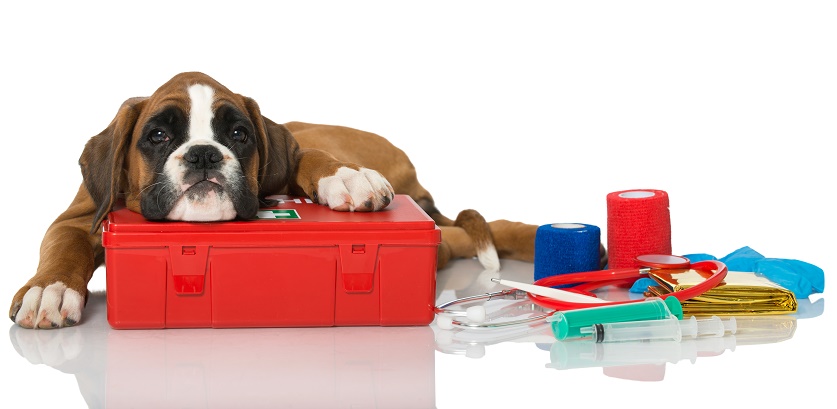Preparing Your Pet For Weather Emergencies
Post by Blog Manager Robbi Hess
The recent flooding in and around Phoenix, Arizona was close to home for me as I used to live there and instantly recognized many of the areas in which cars were disabled on the highways with water covering their roofs. I have many friends who live there who  were dealing with the monsoon rains and are now facing the aftermath of clean up. Where I now live, in New York, our biggest weather threat is a snow storm that could make roads impassable or cause power outages.
were dealing with the monsoon rains and are now facing the aftermath of clean up. Where I now live, in New York, our biggest weather threat is a snow storm that could make roads impassable or cause power outages.
When you consider that September is National Preparedness Month, it’s the ideal time to think about what you and your family would do if faced with flooding, or hurricanes, or snow storms, power outages, forest fires or any other number of weather emergencies that may require an evacuation. What would happen to your pet? Do you have plans in place in the event your family had to go to a shelter that wouldn’t accept pets? Here are some tips to help you prepare:
- Have a Go-Bag prepared for each of your pets. What is in a Go-Bag? It depends on the pet. Do you have a pet that needs medication? Special foods? Those should be in there as should the pets’ vet records. While my Henrietta, the diva poodle, doesn’t wear a collar in the house because I worry she will jump off something and get hung up, her collar and all of her tags are right by the door so every time we set foot out the door she has her identification. Having your pet’s identification could mean the difference between bringing her home or not. If you have your pet microchipped, make certain all of the contact information is current.
- You should have a first aid kit in the same area as you have your Go-Bag. What should you put in your pets’ first aid kit? Items for wound care — bandages, alcohol, anti bacterial creams; scissors, tweezers, gauze, first aid tape and a guide for how to address wounds or other health emergencies with your pets.
- Keep your pet carriers handy. I know I don’t typically have room in the house for our cat carriers, but they are easy to reach in the shed outside. While Henrietta and Spenser are great on leashes, the cats would need to be contained for their safety.
- Keep enough bottled water handy for the entire family and your pets.
- If you live in colder climates, invest in heat blankets — like those they provide at airports — they look like large aluminum sheets, but can help preserve body heat. You may also want to invest in the seat warmer models that many people use at outdoor sports games. If the heat goes out you will need to keep your pet’s body temperature up and these items can help.
- Toys, treats and other items that may make your pet feel more comfortable should be kept by your Go-Bag. You will also
 want to keep food bowls, food and can openers, if necessary.
want to keep food bowls, food and can openers, if necessary. - Stock the bag with “glow sticks.” These can be lifesavers if you’re forced to walk somewhere in the dark. You can also attach smaller ones to your pets collars to help make them more visible.
- Keep a list of emergency contact information — friends, family, neighbors — who may be called upon to care for your pets. Either laminate this list or put it in a waterproof container.
- Make plans today as to where you would stay if you were evacuated. Does the local area have an evacuation center that will accept you and your pets? If not, what arrangements will you make for your pets? If you’re able to leave the area, do you have a friend or family member with whom you and your pets can stay until the crisis passes? If you’re not sure, make phone calls today and make sure you have those arrangements in place. You don’t want to operate in crisis mode if an emergency occurs.
- If you have cats you may want to have an additional bag or box of litter in the Go-Bag area of your home. You don’t want to have to fret about where your cats will “go” if you have to stay with a friend or family member and having a litter that they are accustomed to will help relieve any litter box stress issues. Be aware that if you are moving your pets into unfamiliar surroundings, they need as many items to be as consistent as possible or litter box avoidance may occur and you don’t want to cause any damage to the home of a friend who was kind enough to take you in.
What other steps do you take to prepare for emergencies? Do you have a pet first aid kit or a Go-Bag in your closet?
(Photo Shutterstock: Dog on raft)
(Photo Shutterstock: Pet with first aid kit)





